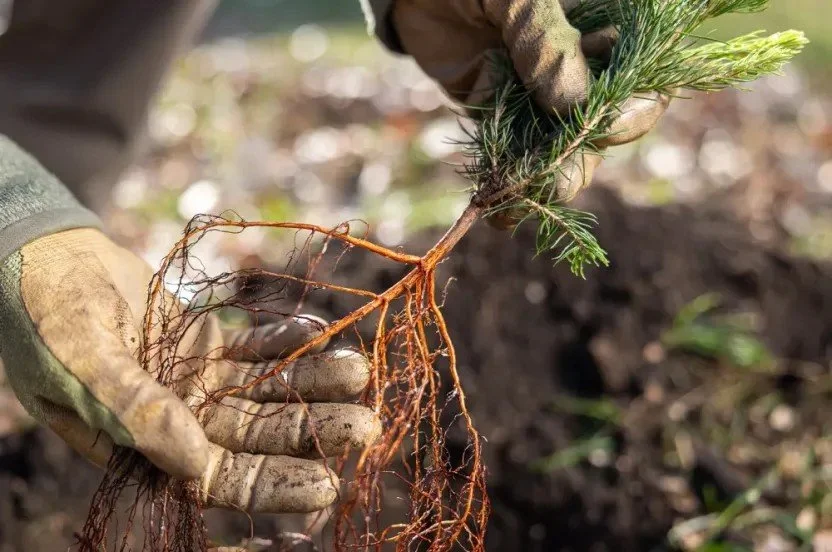Bare Root Introduction
*
Bare Root Introduction *
Optimizing Land Use and Production in Conifer Nurseries
To maximize land use and productivity, young trees at the nursery are first lined out in compact holding areas, using minimal space. Here, they are cultivated until they reach a height of approximately 2 feet (0.6 meters). Once this initial growth stage is achieved, the trees are dug out as bareroot stock and transplanted into the nursery’s main fields. In these fields, the trees are properly spaced to allow for healthy growth to maturity.
One of the most challenging aspects of being a grower—and a key reason mature trees are costly—is the time and care required to nurture a seedling conifer to the 2–3 foot (0.6–0.9 meter) height range. This early phase demands years of careful labor and patience, as the trees are particularly vulnerable and mortality rates are higher. However, once conifers reach the 2-foot mark, they begin to grow at an accelerated rate.
The concept of bareroot transplants originally emerged as a way to move stock efficiently between nurseries. Today, it's a strategic tool used to streamline production. By transplanting or purchasing conifer stock at the 2-foot stage, growers significantly reduce the time required to bring trees to marketable size and make more efficient use of nursery land.
This approach not only improves survival rates and resource efficiency but also helps meet the high demand for mature trees more sustainably.
